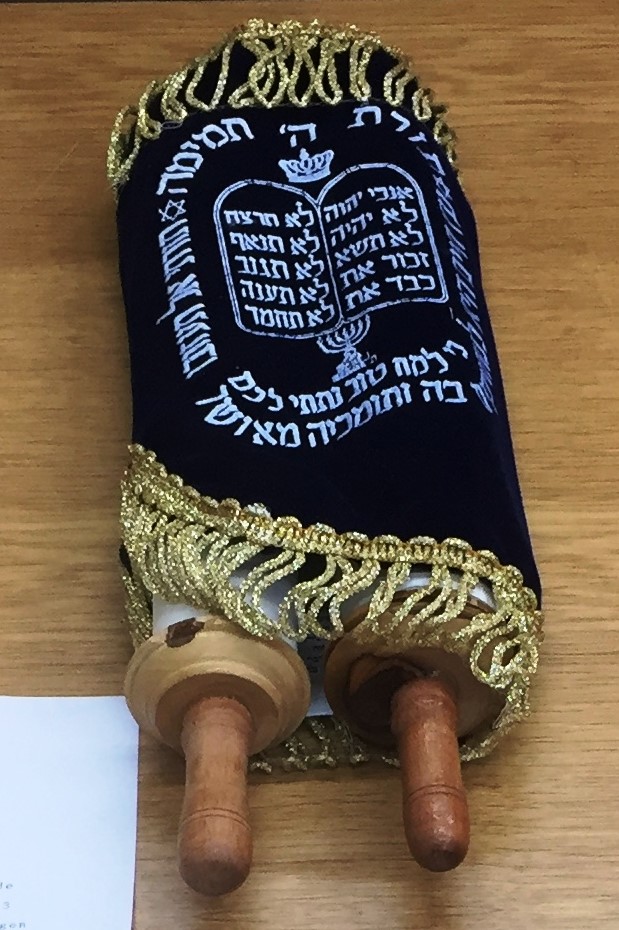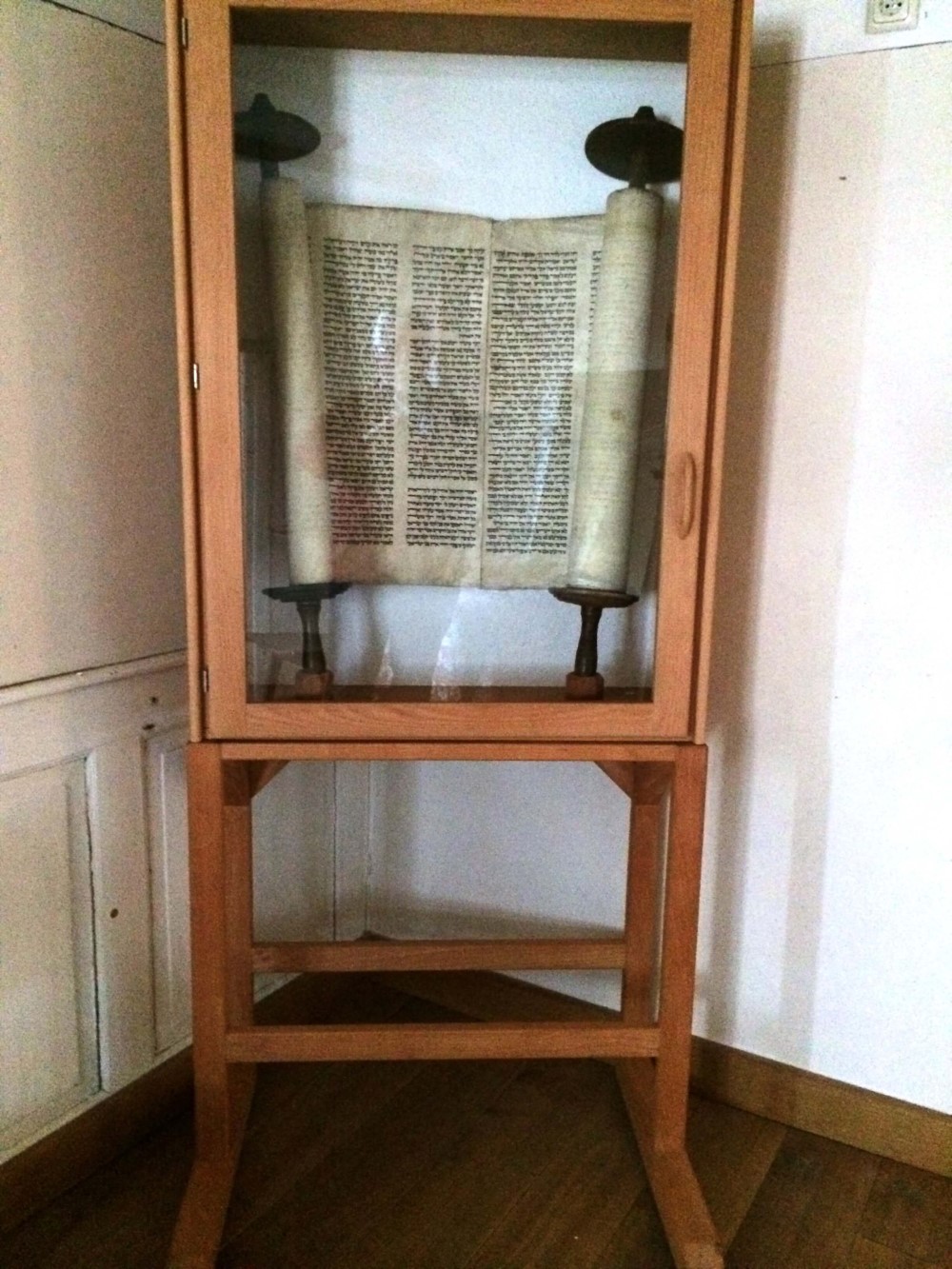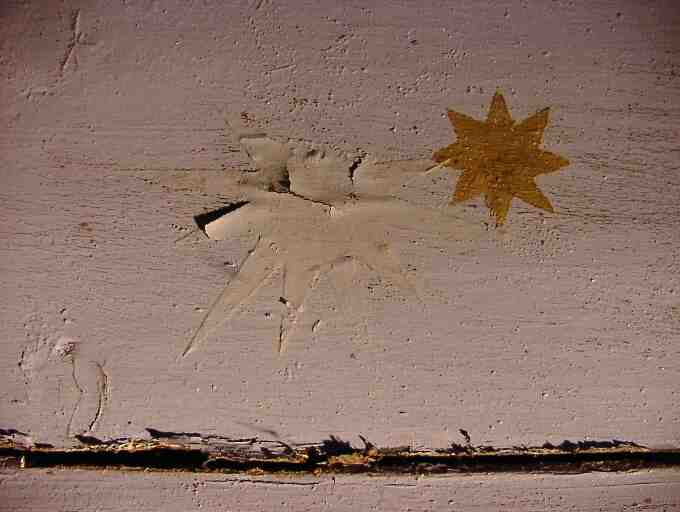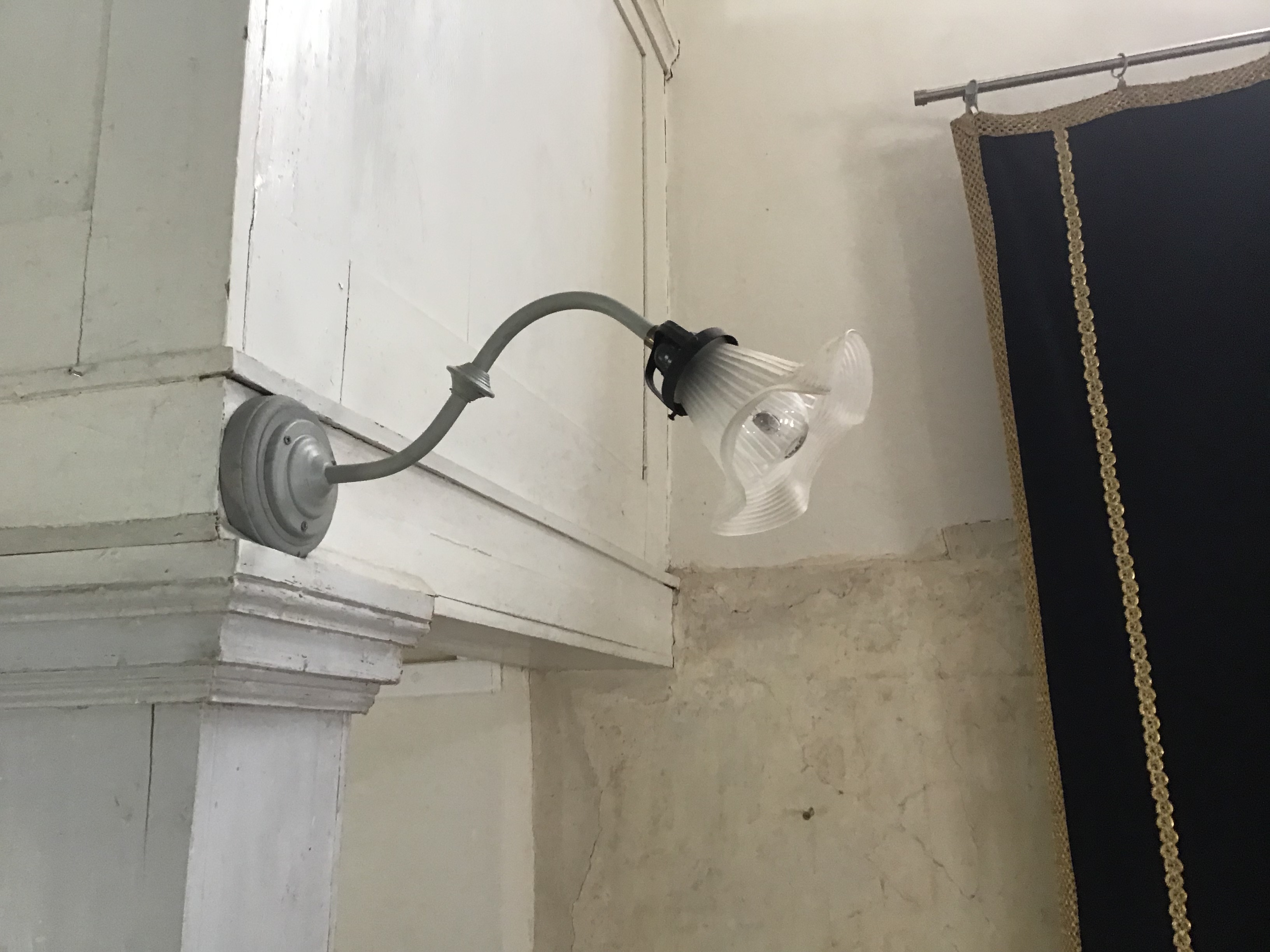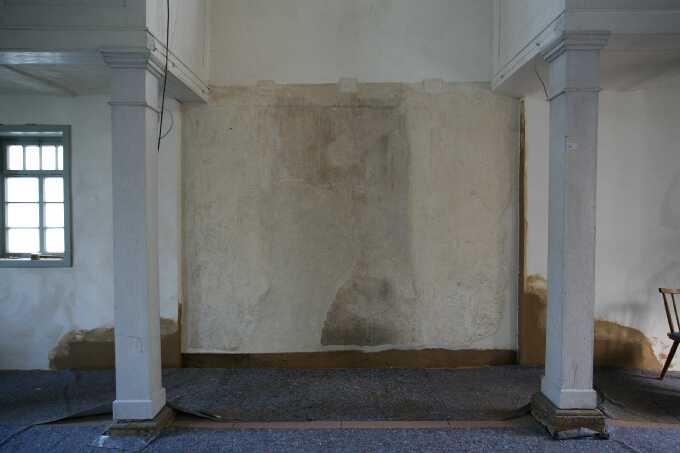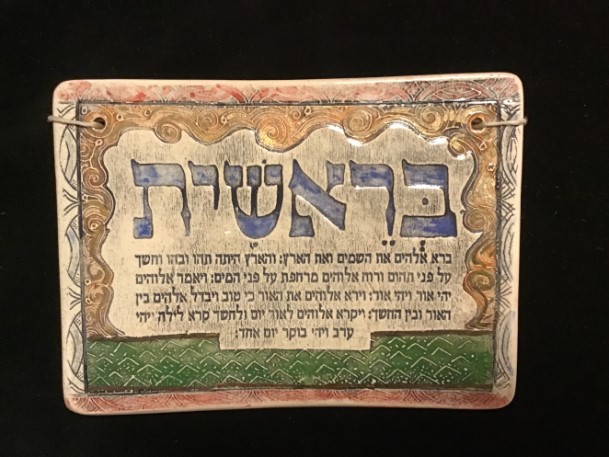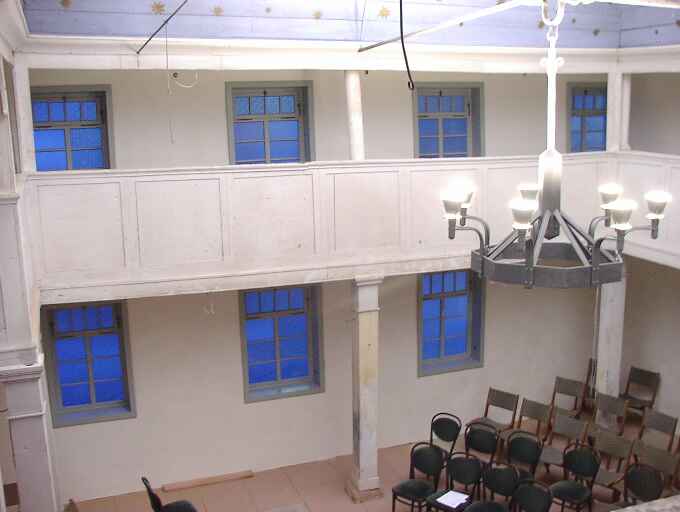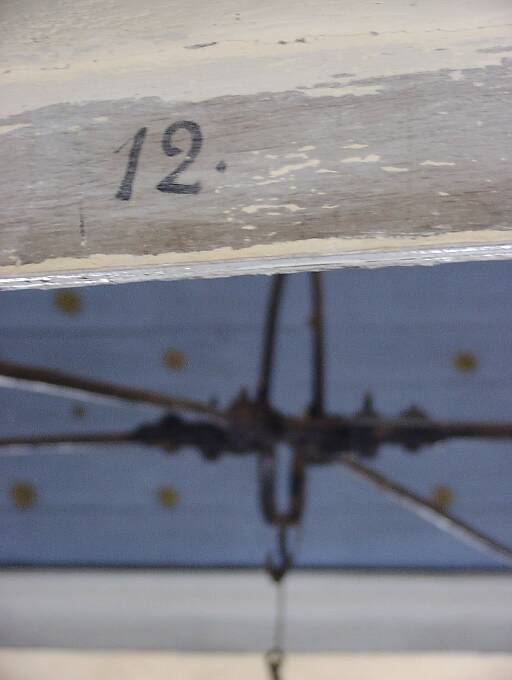
This Torah curtain comes from New York and was donated to the Förderverein in 2000 by the Mildenberg and Behrend families. The velvet fabric is embroidered with golden thread with golden fringes and borders and measures 220x160cm.
One of two surviving wall lights can be seen on the left. They were used to light the Torah shrine.
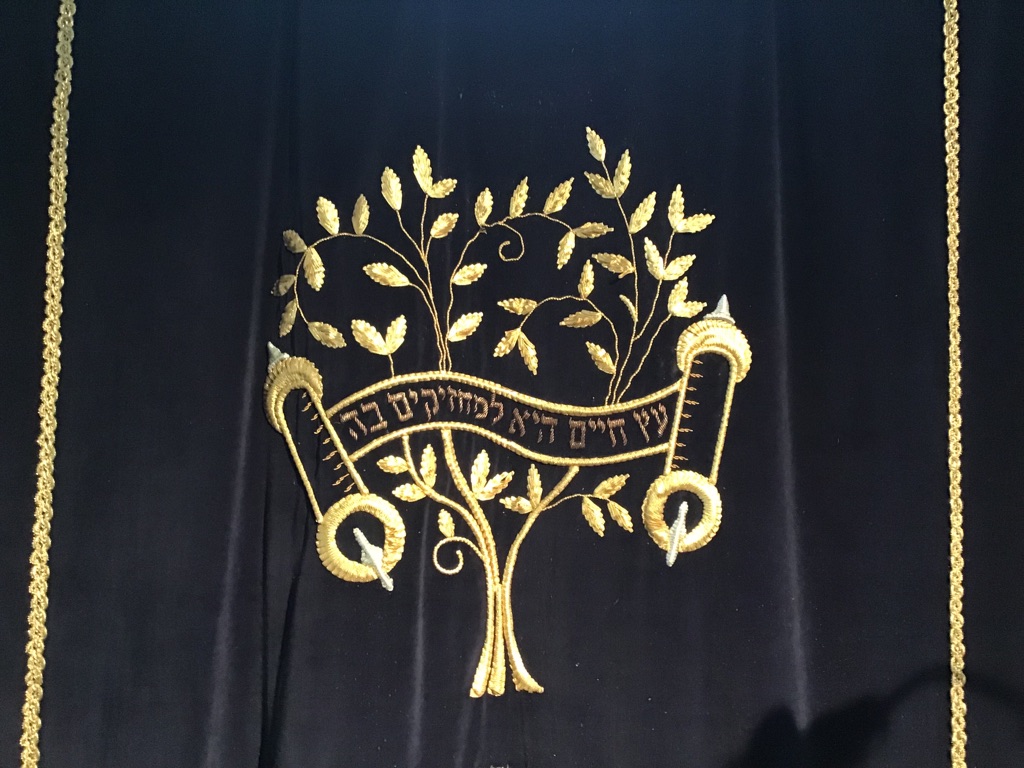
The inscription in the banner reads:
„It is a tree of life for all those who cling to it."
The word ‘she’ refers to wisdom or the Torah.
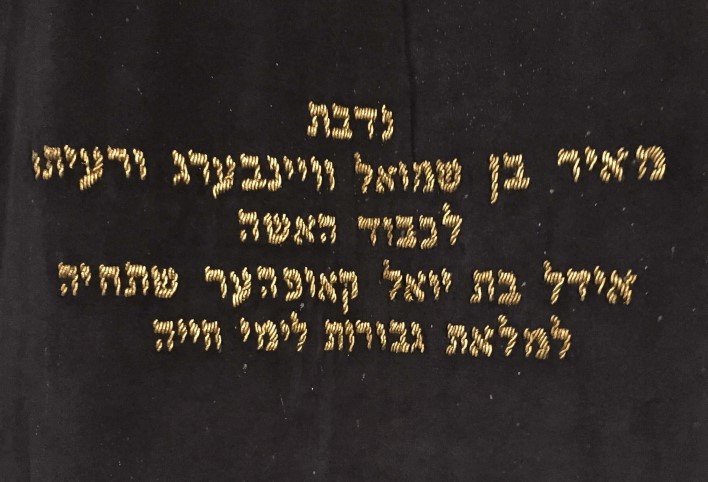 Fotos: Karl-Heinz Stadtler
Fotos: Karl-Heinz Stadtler
The inscription in the donor's signature reads:
"A donation from Meir, son of Samuel Weinberg and his wife
in honour of the lady Eidel, the daughter of
Joel Kofer (or: Kaufer)
May she live a long life.
On the occasion of her reaching the age of 80"
The persons named are members of a Jewish community in New York.
Due to the merging of two Jewish communities, a Torah curtain was no longer used.



